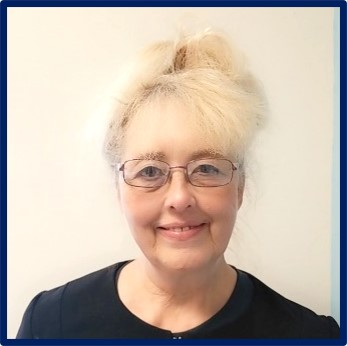World Autism Acceptance Week
National Autistic Society (NAS) created this topic it to raise awareness of the 700,000 people living with autism in the UK and to promote acceptance of them.
To raise money for 700,000, the NAS is looking for people to step up and assist them in highlighting this issue across the nation by embracing and promoting work- and school-based initiatives, as well as virtual events like running, swimming, cycling, or walking 7km during the week.
ASD is a neurodevelopmental disorder
Autism Spectrum Disorder (ASD) is characterized by difficulties in social communication and repetitive behaviors. In recent years, there has been a noticeable increase in its prevalence, prompting researchers to investigate potential contributing factors. This article delves into the impact of changes in diagnostic criteria on these rising rates, while also exploring the role of genetics and environmental influences on ASD. The authors also discuss risk factors and outline the steps involved in clinical evaluation, starting with developmental screening and culminating in a definitive diagnosis. Additionally, recommendations for screening for coexisting conditions are also provided.
Autism is a frequent childhood neurodevelopmental condition with a strong genetic predisposition. Rather than being one unified illness, it presents as a clinical syndrome with varying impairments in social interaction and language, as well as restrictive interests and repetitive behaviors. Recent progress in understanding the genetic basis of autism has highlighted its diverse origins, with each genetic risk factor accounting for only a small portion of cases or having minimal impact. As a result, it is not surprising that there are no definitive structural or neuropathological characteristics identified thus far. Given the diversity within the autism spectrum disorder (ASD), exploring inheritable aspects of the disorder, also known as endophenotypes, such as language and social cognition, shows promise for advancing genetic and neurobiological research. Although early intensive behavioral and cognitive interventions have proven successful in many cases, the majority of children do not fully recover from autism. Consequently, developing targeted treatments based on specific pathophysiological and etiological subtypes of ASD remains an important and feasible goal in ongoing research efforts.
Autism spectrum disorders (ASDs) are a diverse group of conditions. They are characterized by difficulties with social interaction and communication. It is also characterized by atypical behavior patterns and activities, such as difficulty transitioning from one activity to another, a focus on details, and unusual reactions to sensations.
Autistic individuals have unique abilities and needs that may change with time. While certain individuals can live independently, others may have more severe disabilities and rely on lifelong care and assistance. Education and employment opportunities are often affected by autism, and families providing support may face significant challenges. The quality of life for those with autism is greatly influenced by societal attitudes and the level of support provided by local and national authorities.
Autism may be detected early in childhood, but it is often not diagnosed until much later.
It is common for autism patients to have co-occurring conditions such as epilepsy, depression, anxiety, and attention deficit hyperactivity disorder, as well as challenging behaviors such as difficulty sleeping and self-injury. Among autistic people, intellectual functioning varies widely, ranging from profound impairment to superiority.
Infectious diseases
One in 100 children in the world is estimated to have autism (1). This estimate represents an average, and reported prevalence varies substantially across studies. In some well-controlled studies, however, autism prevalence has been reported as substantially higher. It is unclear how prevalent autism is in many countries with low or middle incomes.
The causes
There are probably many factors that increase a child’s chances of having autism, including environmental and genetic factors.
There has been extensive research conducted using a variety of different methods and over a long period of time that indicates that the measles, mumps, and rubella vaccine does not cause autism. Some of the authors had undeclared biases that influenced what they reported about their research, and studies that were interpreted as indicating any such link were flawed.
Additionally, other childhood vaccines do not appear to increase autism risk. The preservative thiomersal and the additive aluminum, which are found in some inactivated vaccines, were extensively researched and concluded that these constituents do not increase autism risk in children.
Known as DSM-5, the latest edition of the DSM introduces a new approach to diagnosing autism.
In the process, the diagnoses of autistic disorder, Asperger’s disorder, childhood disintegrative disorder, and PDD-NOS were combined into a single “spectrum” diagnosis. However, Rett syndrome is now considered a separate neurological disorder and is not included as part of ASD in DSM-5. Additionally, a new category called social (pragmatic) communication disorder (SPCD) was created for those who struggle with social communication without repetitive or restricted behaviors. Furthermore, severity level descriptors were added to assist in determining the necessary level of support for individuals with ASD.
Globally, 0.76% of children have autism spectrum disorder (ASD), according to the World Health Organization (WHO).
The CDC estimates that approximately 1.68% of US children aged 8 years (or 1 in 59 children) have been diagnosed with ASD. However, parents reported a slightly higher average of 2.5% in 2016. According to ADDM, the prevalence of ASD in the US has more than doubled since 2000-2002 but has remained stable from 2014 to 2016 with no significant increase. It should be noted that changes in diagnostic criteria may impact these figures and the full effect of DSM-5 criteria is still being studied.
As a future healthcare provider, you must understand the importance of empathy and compassion. When you are dealing with children and their parents, it is especially important to be gentle, kind and patient when it comes to their needs. You are never just addressing the needs of a single patient but of their family as well.
References:
Psychol Med 2015;45:601-13. 10.1017/S003329171400172X [PubMed] [CrossRef] [Google Scholar] Baxter AJ, Brugha TS, Erskine HE, et al. Epidemiology and global burden of autism spectrum disorders.
[PMC free article] [PubMed] [CrossRef] [Google Scholar] Palinkas LA, Mendon SJ, Hamilton AB. Annual review of public health innovations in mixed methods evaluations. Annu Rev Public Heal 2019;40:423-42.
Pediatrics 2018;142:e20174161. 10.1542/peds.2017-4161 [PMC free article] [PubMed] [CrossRef] [Google Scholar] 18. Kogan MD, Vladutiu CJ, Schieve LA, et al. Parent-reported autism spectrum disorder among US children.
Xu G, Strathearn L, Liu B, et al. Prevalence of autism spectrum disorder among US children and adolescents, 2014-2016. JAMA 2018;319:81. 10.1001/jama.2017.17812 [PMC free article] [PubMed] [CrossRef] [Google Scholar]
In: Hodges H, Fealko C, Soares N. Autism spectrum disorder: definition, epidemiology, causes, and clinical evaluation. Transl Pediatr. 2020 Feb;9(Suppl 1):S55-S65.
A review of advances in autism. Annu Rev Med. 2009;60:367-80. doi: 10.1146/annurev.med.60.053107.121225. PMID: 19630577; PMCID: PMC3645857.
Global prevalence of autism: A systematic review update. Zeidan J et al. Autism Research 2022 March.
Wakefield’s affair: 12 years of uncertainty whereas no link between autism and MMR vaccine has been proved. Maisonneuve H, Floret D. Presse Med. 2012 Sep; French (https://www.ncbi.nlm.nih.gov/pubmed/22748860).
Lancet retracts Wakefield’s MMR paper. Dyer C. BMJ 2010;340:c696. 2 February 2010 (https://pubmed.ncbi.nlm.nih.gov/20124366/)
Kmietowicz Z. Wakefield is struck off for the “serious and wide-ranging findings against him” BMJ 2010; 340 :c2803 doi:10.1136/bmj.c2803 (https://www.bmj.com/content/340/bmj.c2803)

Nancy L. Kimmel obtained her PhD in Environmental Engineering in 2002, then went on to teach Physics and Mechanical Engineering at Lawrence Technological University, Henry Ford College and Oakland University. She obtained her Associate in Nursing from Henry Ford College and then went on to earn her Master Degree as a Family Nurse Practitioner and became Board Certified working as a licensed FNP in the State of Michigan. She then went on to Medical School where she is now in her 3rd year, and is also in the process of obtaining her Doctorate in Nursing Practice through Chamberlin University. She has authored the NET Study Guide, as well a several books on subjects of Math, ECG/EKG and Phlebotomy. She holds a patent on an Air Filter through the U.S. Patent Office.


